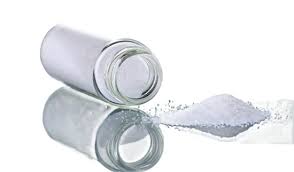
- +86-13363869198
- weimiaohb@126.com

Dec . 05, 2024 07:09 Back to list
Dermaseptin CAS 136212-91-4 Supplier Information and Product Details
Dermaseptin A Promising Antimicrobial Peptide
Dermaseptin is an antimicrobial peptide, which has garnered significant attention in pharmaceutical and biomedical research due to its potential therapeutic applications. The peptide, identified by its CAS number 136212-91-4, was first isolated from the skin secretions of the South American hylid frog, Phyllomedusa sauvagii. With the rising concerns over antibiotic resistance, dermaseptins present an innovative approach to combating infections and enhancing the efficacy of existing therapeutic modalities.
Structure and Mechanism of Action
Dermaseptin possesses a unique structure characterized by a series of positively charged amino acids and hydrophobic residues. This structure enables it to interact efficiently with microbial membranes. Upon contact, dermaseptin disrupts the integrity of these membranes, leading to cell lysis or death. The mechanism is primarily attributed to its ability to form pores in the lipid bilayers of bacteria, fungi, and even some viruses.
A salient feature of dermaseptins is their selectivity. While they are lethal to microbial cells, their impact on mammalian cells is less pronounced, making them suitable candidates for therapeutic applications. This selectivity is essential in reducing the risk of toxicity and side effects, which are often major concerns with traditional antibiotics.
Therapeutic Applications
The antimicrobial properties of dermaseptin extend beyond just bacteria. Research indicates that dermaseptin exhibits antifungal, antiviral, and even antiparasitic activities. This broad spectrum of action opens pathways for dermaseptin to be utilized in various medical fields, including dermatology, infectious diseases, and wound healing.
In dermatological applications, dermaseptin can be particularly beneficial for treating chronic infections that are often resistant to traditional treatments. For instance, patients with diabetic ulcers or burn wounds frequently face challenges due to bacterial colonization. Dermaseptin’s ability to effectively eliminate resistant strains of bacteria, such as methicillin-resistant Staphylococcus aureus (MRSA), can significantly enhance the healing process.
Moreover, dermaseptin's immunomodulatory properties have attracted interest for its role in enhancing immune responses. This can be particularly advantageous in vaccine development, where dermaseptin could be used as an adjuvant to strengthen immune responses against specific pathogens.
dermaseptin cas 136212-91-4 manufacturer

Production and Synthesis
Given the potential of dermaseptin, the methods of production are of primary interest to researchers and manufacturers. Traditionally, dermaseptins were sourced from frog secretions, but this approach is unsustainable and raises ethical concerns. Consequently, synthetic biology and recombinant technology have become crucial in the production of dermaseptins.
Recombinant DNA technology allows for the insertion of the dermaseptin gene into bacterial or yeast systems, where the peptide can be expressed and harvested in large quantities. This enables consistent quality and the possibility of producing modified derivatives with enhanced properties. These advancements not only reduce environmental impacts but also make therapeutic development more feasible and scalable.
Current Research and Future Directions
Ongoing studies are focused on optimizing the efficacy of dermaseptin, understanding its interaction with different cell types, and exploring combinations with other antimicrobial agents to enhance efficacy. These hybrid approaches could potentially address the pressing issue of polypharmacy, where multiple drugs are used concurrently, thus elevating the risk of adverse effects.
Additionally, clinical trials are imperative to establish safety profiles, dosing regimens, and potential applications in human medicine. The goal is to translate dermaseptin from laboratory research to marketable therapies that can provide solutions in the face of increasing antimicrobial resistance.
Conclusion
As antimicrobial resistance continues to pose a significant threat to global health, peptides like dermaseptin present hope for innovative treatments. Their unique properties, coupled with advances in production technologies, position dermaseptins as a promising avenue in the search for effective antimicrobial agents. Continued research and development will be vital to unlocking the full potential of dermaseptins and ensuring their successful integration into modern medicine.
-
GS-441524 White Liquid Production for Factories | AI-Optimized
NewsAug.02,2025
-
AI-Optimized CAS: 79099-07-3 Factories for High Yield
NewsAug.01,2025
-
Premium CAS 1451-83-8 Factory with GPT-4 Turbo | AI-Optimized
NewsJul.31,2025
-
Pharmaceutical Intermediates - AI-Optimized Synthesis & Purity
NewsJul.31,2025
-
Top CAS: 79099-07-3 Factories & Wholesale Supplier from China
NewsJul.30,2025
-
High-Quality GS-441524 for White Liquid Type Factories & Suppliers
NewsJul.29,2025